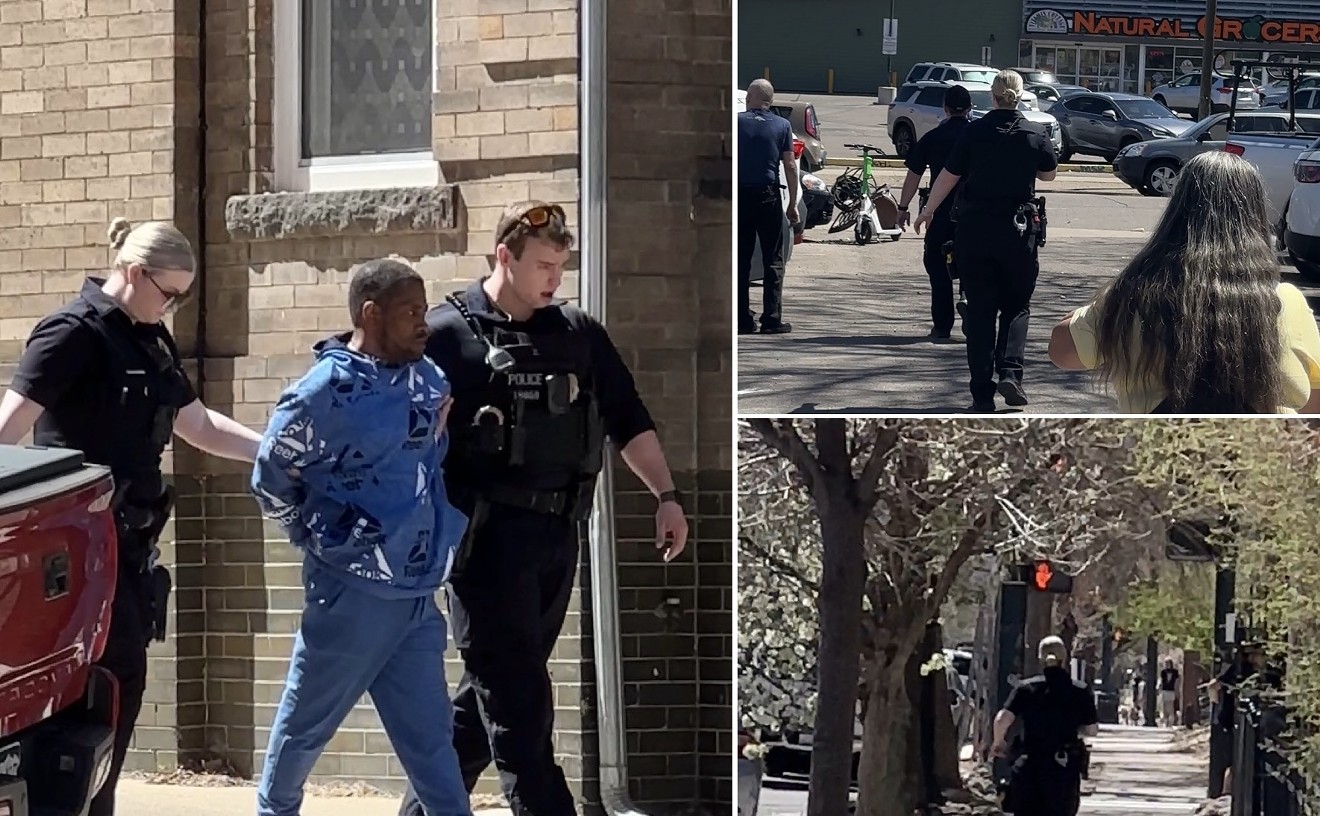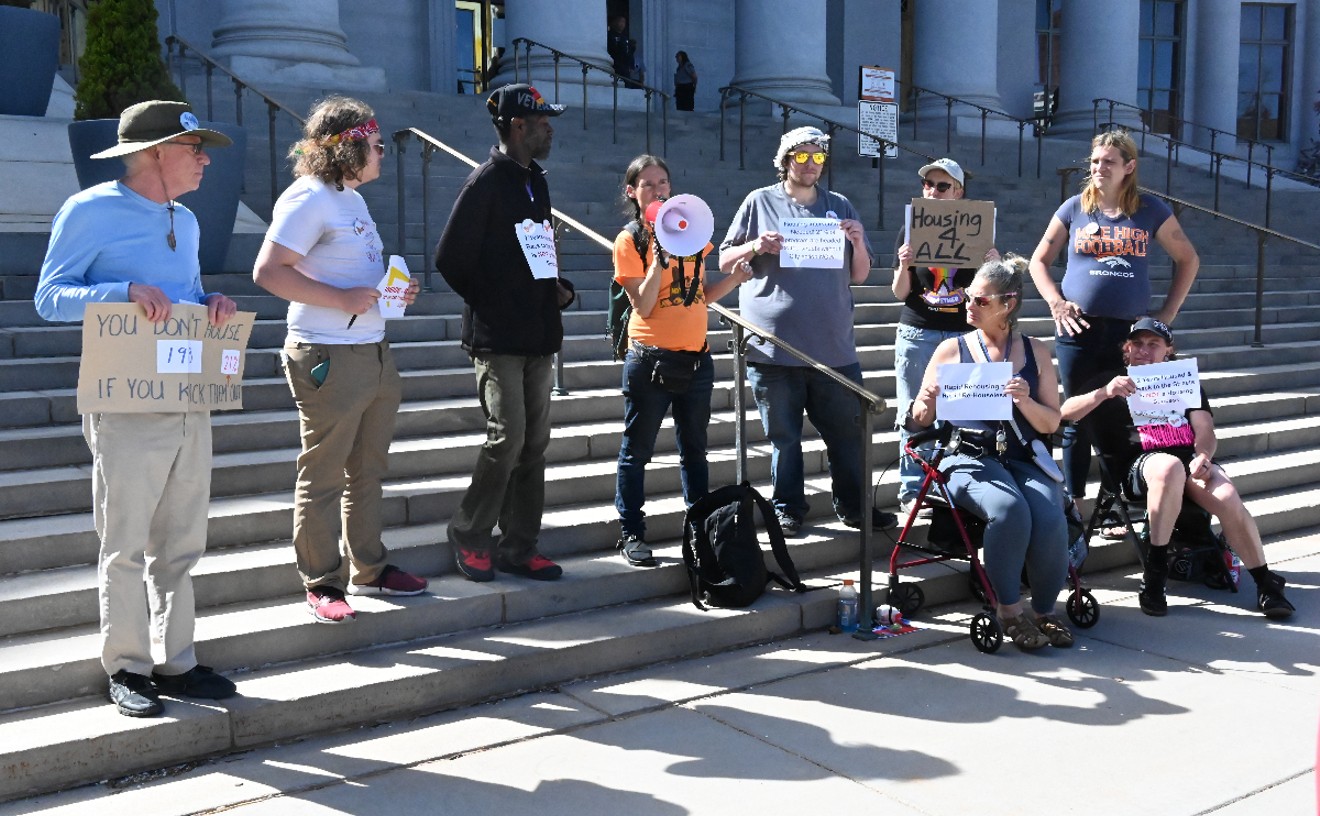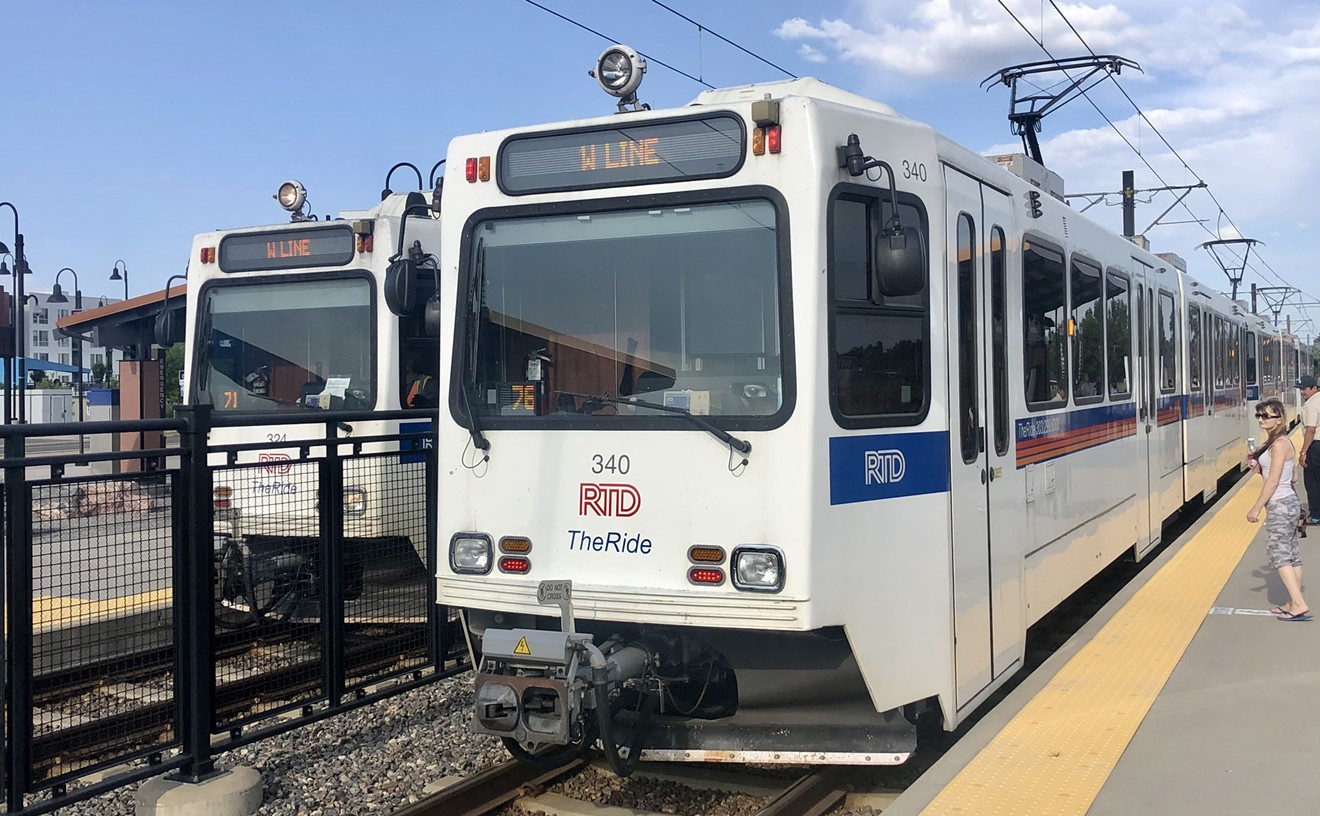On March 23, Westword made a number of Colorado Open Records Act requests to the Denver Department of Human Services and the Mayor’s Office for internal documents related to the planning of the homeless sweeps that the city has been conducting over the past month. Westword did not receive responses in time to include the material in last week’s “Clean Sweep”; the documents finally arrived on April 7 — two weeks after we’d sent our initial requests. (Responses are supposed to come within three working days.) On April 8, Westword also received documents from the ACLU of Colorado, which had issued its own CORA requests related to the homeless sweeps.
Together, the materials turned over by the city reveal that months of preparation went into the sweeps, especially the dismantling of encampments along Park Avenue West that began on March 8.
And although there is not a single e-mail written by Mayor Michael Hancock among the hundreds that Westword received, the documents suggest that Evan Dreyer, Hancock’s deputy chief of staff, was the point person responsible for planning and carrying out the sweeps.
One of the first major meetings to prepare for the sweeps occurred on January 11 — nearly two months before the Park Avenue action. That’s when communications directors from various city departments — DHS, Public Works, the Mayor’s Office — gathered to begin devising a media strategy. In a January 10 e-mail addressed to “Dear Communicators,” Dreyer noted: "For the past several months, we have been working to address the sidewalk encampments in the Ballpark area. In September, you helped develop messaging and handle media…. We are about to step up those efforts and we would like to reconvene with you on Monday.... Among other things, he reminded them: According to DPD and service providers, the main reason people continue to live on the sidewalk is so that they can use drugs."
By January 15, Dreyer was coordinating with multiple city departments to prepare a way to handle items belonging to the homeless in the encampments. That day, in an e-mail sent to three dozen city officials, Dreyer laid out the next steps and addressed the need to figure out how the city would confiscate items and how those items would be transferred and stored:
The “protocol document” that Dreyer cites is the Department of Public Works’ procedure for removing “physical encumbrances on City-owned property associated with ongoing, massed encampments in a defined area on such property.” This procedure was revised in February specifically in preparation for the March sweeps, with the city adopting a protocol dictating that signs be posted 24 hours in advance of any object removals in encampment areas, and that items confiscated be catalogued and made available for retrieval at a city facility for thirty days.
But e-mails turned over to the ACLU reveal that some city officials wondered if this protocol was followed during the March 9 sweep of 26th Street, in the area called Resurrection Village. The e-mail thread began with a 9:17 a.m. message from Dreyer to Public Works and officials with the Denver City Attorney’s Office with the subject line “This morning”:
Since signs had not been posted in the area 24 hours in advance, some wondered if the proper procedure had been followed. After discussion about editing a letter to the Denver Police Department to include the Resurrection Village area for enforcement (there are many blacked out/redacted e-mails from the City Attorney’s Office in the CORA response), Public Works Executive Director Jose Cornejo sent a concerned e-mail to Dreyer at 9:59 a.m.:
Despite Cornejo’s suggestion, the sweep moved forward that morning. Dreyer, acting on behalf of the Mayor’s Office, was apparently pushing for the action. Just before Cornejo’s e-mail arrived, he had written this one-line message:
According to Amber Miller, communications director for the Mayor’s Office, the city went ahead on March 9 because Public Works’ encumbrance-removal procedure was not applicable to the area around Resurrection Village, since the city didn’t define it as a mass encampment.
Still, officials appeared uneasy, taking the half-action of moving some existing signs from another location even though they wouldn’t be at Resurrection Village for a full 24 hours before the sweep commenced. At 11:21 a.m., Nancy Kuhn of Public Works wrote:
This action occurred just one week after Dreyer had compiled an “outreach list” of homeless service providers, churches and local businesses so that the city could contact them and inform them of the sweeps — reinforcing statements from service providers on Mayor Hancock’s Commission on Homelessness, like John Parvensky and Tom Luehrs, who say that they were kept out of the planning process.
On March 3, Dreyer sent an e-mail to Human Services communications director Julie Smith to help her field questions from reporters. The talking points that Dreyer sent Smith provide some insight as to the city’s reasons for the sweeps, and indicate that the only immediate plan for those about to be uprooted was to have them check into homeless shelters:
Absent from any of these e-mails is an acknowledgment that using shelters is strictly voluntary, and that some homeless individuals may choose not to use shelters for personal reasons — including the inability to store all of their possessions. Apparently the city did not plan for what to do with homeless individuals who exercised their right to decline shelters.
This is because “we fully believe that people experiencing homelessness are better served when they have the stability of housing or shelter and the connection to services that supportive housing and shelter programs provide,” Miller says. “There are more than 3,000 men and women who utilize shelters, transitional and permanent supportive housing every day. While there are a few who wish to remain outdoors, the overwhelming majority of people who are homeless are choosing to seek the support provided through a myriad of programs in Denver, many of which are funded at least in part by the city.”
After receiving the CORA documents, Westword reached out to Dreyer, a former Denver Post city editor, to ask for an interview; Miller says that Dreyer is not available for a conversation.
Human Services' Smith did not provide any hard dates as to when the Peoria Shelter — a facility where Denver buses homeless people who do not get into the downtown shelters, which we profiled in “End of the Road,” our February 11 cover story — would be closing, or the deadline by which the homeless who lost their possessions in the first days of the sweep must claim them. There is “no exact closing date for Peoria,” she says. “We are looking at other potential locations but have not finalized one — so that location continues to serve as our overflow site.”
As for the possessions of the homeless, although thirty days have passed since they were confiscated, she says, “we will continue storing the items at Glenarm for the time being.”
Below, you can read the CORA responses that were provided to Westword and the ACLU in their entirety:
[
{
"name": "Air - MediumRectangle - Inline Content - Mobile Display Size",
"component": "12017618",
"insertPoint": "2",
"requiredCountToDisplay": "2"
},{
"name": "Editor Picks",
"component": "17242653",
"insertPoint": "4",
"requiredCountToDisplay": "1"
},{
"name": "Inline Links",
"component": "18838239",
"insertPoint": "8th",
"startingPoint": 8,
"requiredCountToDisplay": "7",
"maxInsertions": 25
},{
"name": "Air - MediumRectangle - Combo - Inline Content",
"component": "17261320",
"insertPoint": "8th",
"startingPoint": 8,
"requiredCountToDisplay": "7",
"maxInsertions": 25
},{
"name": "Inline Links",
"component": "18838239",
"insertPoint": "8th",
"startingPoint": 12,
"requiredCountToDisplay": "11",
"maxInsertions": 25
},{
"name": "Air - Leaderboard Tower - Combo - Inline Content",
"component": "17261321",
"insertPoint": "8th",
"startingPoint": 12,
"requiredCountToDisplay": "11",
"maxInsertions": 25
}
]











